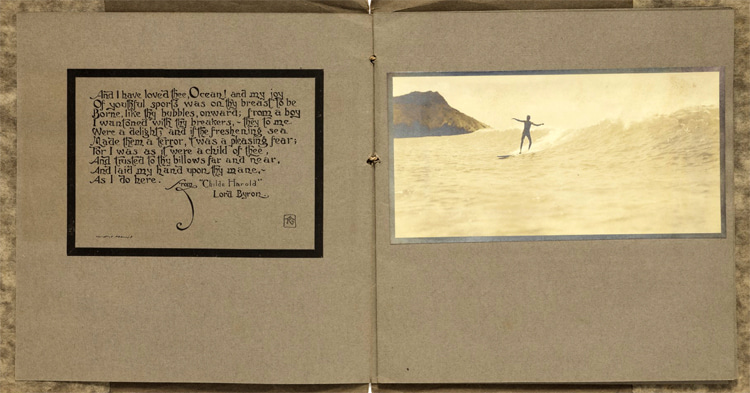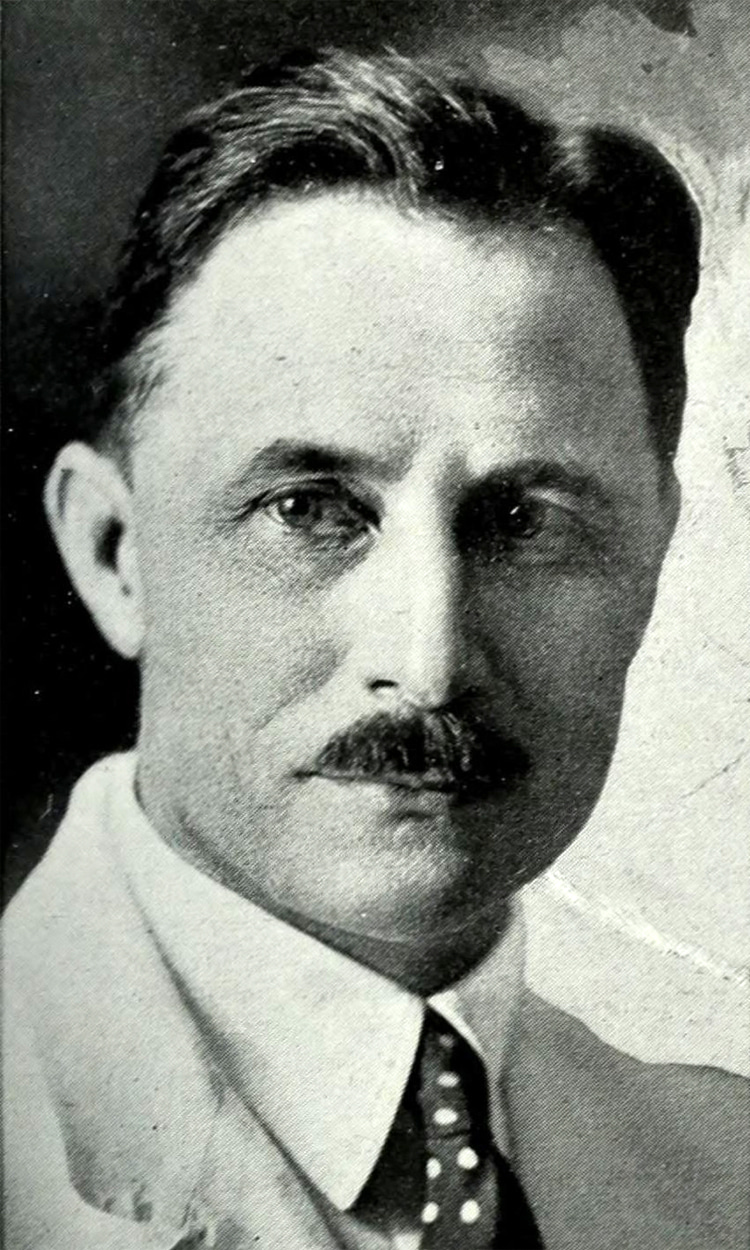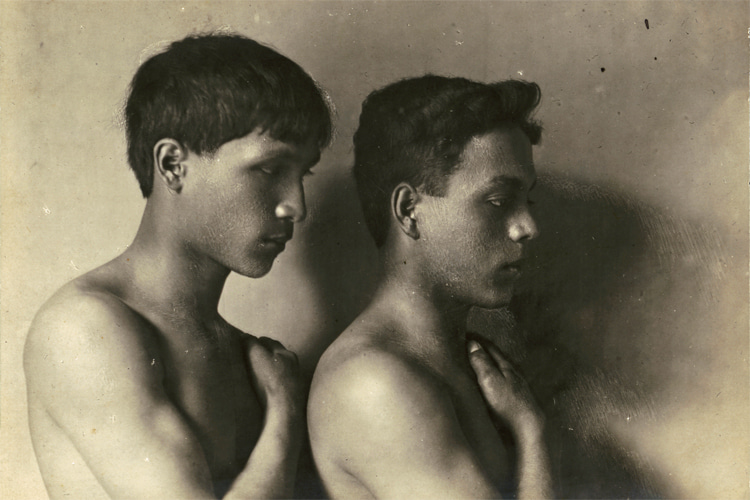The self-published book by Alfred Richard Gurrey Jr. contains a stunning series of early photographs of the sport. Dating to 1914, only several copies are known to exist.
The book combines artistically rendered photo prints with romantic poetry from Lord Byron and descriptive prose from Gurrey himself to form a one of a kind document that captures the spirit of surfing like no other book.
A. R. Gurrey Jr. was one of Hui Nalu members, the “club of the waves,” founded in 1908 in Oahu, Hawaii.
The surf counted the legendary Duke Kahanamoku as a founding member, so A. R. Gurrey Jr. was personally connected to the people in the book, and his reverence for surfing is unquestionable.
Experts that there might be only six handmade copies of “The Surf Riders of Hawaii” worldwide.
The ultra-limited edition was assembled using photographic prints that still reveal the silver emulsion.


The Story of A. R. Gurrey Jr.
A. R. Gurrey Jr. was an educated man. He had a degree in engineering from the University of California, Berkeley.
Instead of joining his father in the insurance business, he opened one of the first art galleries in Honolulu, Hawaii.
Gurrey Jr. met Alexander Hume Ford, the multi-task editor and founder of the Outrigger Canoe Club, who helped keep surfing alive in Hawaii and promoted Duke Kahanamoku and George Freeth to mainstream America.
A. R. Gurrey Jr. was the first person to shoot surfers and a pioneer in water photography. He used boats and canoes to get closer to action.
The art lover was also a surfer himself, so he knew how and where to capture surf riders gliding across Waikiki’s waves.


“He understood what was involved in the sport, the pleasures and joy, and he captured that much better than anyone had done before,” Joel T. Smith, author of “The Illustrated Atlas of Surfing History,” once noted.
“A. R. Gurrey Jr. can really be considered the father of surf photography.”
Smith stresses that although he came from a well-established and high-society family, he did not join the Outrigger Canoe Club.
“He was only one of a handful of haoles who was a member of the Hui Nalu with all the Kahanamoku brothers, which says a lot about him,” adds Joel T. Smith.
The author of “The Surf Riders of Hawaii” was married to Caroline Haskins Gurrey (1875-1927), an American photographer who worked in the Hawaiian islands in the early 1900s.
She got famous for her photo series on mixed-race Hawaiian children, including the “Portrait of Japanese-Hawaiian and Portuguese-Hawaiian boys” (1909), pictured below.
A. R. Gurrey Jr.’s father outlived his son and was also a celebrated artist. Alfred Richard Gurrey Sr. painted several widely acclaimed seascapes in oil.


Failure and Sadness
In 1923, A. R. Gurrey Jr. closed down his art gallery.
After failing to keep it a profitable business, the surf photographer was forced to work with his father in the insurance industry, even though he hated it.
During this time, his residency was struck by a flood and a fire that destroyed all of his negatives.
A. R. Gurrey Jr. passed away shortly after at the age of 53. Some believe he died of a broken heart.
“The Surf Riders of Hawaii” is his most famous contribution to the history of surfing. And it is a rare one, too.
The six leaves of heavy brown wove paper feature eight mounted gelatin-silver photographs of surfers, and range in size from 3 3/8 x 6 5/8 inches to 1 7/8 x 3 5/8 inches.
The book is stab-sewn into stiff mottled wrappers, features a printed label on the front wrapper.
At least one of the copies of “The Surf Riders of Hawaii” was given to his nephew Water Gurrey Bayer and remained in the family until his death in 2010.
In 2013, the Surfing Heritage Foundation was allowed to sell the booklet at auction to raise funds for its educational activities.
The copy was sold for $28,000.
In 2020, Sotheby’s announced that another copy of “The Surf Riders of Hawaii” was put to auction with the starting bid set at $26,000.





Recent Comments